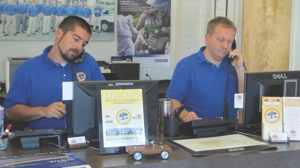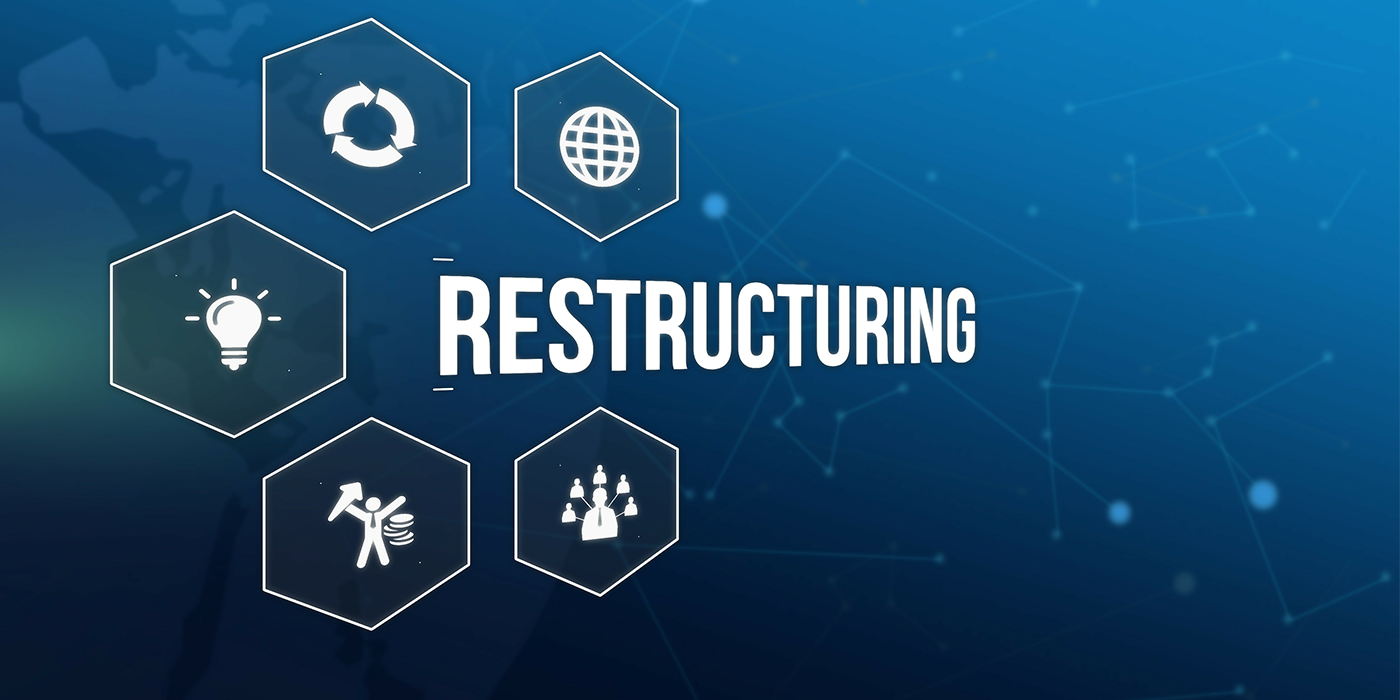 We’ve all experienced it.
We’ve all experienced it.
We call a business seeking information about a product or service and, after countless rings, a quiet, bored-sounding employee mutters “Hello?”
Unsure of our dialing, we verify that it’s the business we thought we called, and when the staffer drones “Yep,” we reluctantly proceed with our question.
“Hold on,” the answerer slurs, placing us on hold for minutes. And when the same employee finally returns, he re-asks what we want and grudgingly replies with a suspiciously brief and simplistic answer.
We wonder whether he knows what he’s talking about, yet, seemingly helpless, we continue to attempt to engage. But only for a little while. And if the employee doesn’t soon transfer us to someone who actually seems to care, we end the call with an insincere thank-you and a firm hang-up.
| 10 QUESTIONS TO TEST YOUR PHONE SKILLS 1) Does a sincere welcome come across when you answer a call? 2) Do you smile? (It’s apparent on the phone.) 3) Do you properly introduce yourself and the dealership, and thank the customer for calling? (“Good morning, thank you for calling the Tire Shop, this is Joe; How can we help you today?”) 4) Do you ask for the caller’s name? (It turns the call into a conversation.) 5) When asked for a tire price, do you ask for the tire size or vehicle information? (Another opportunity for a conversation.) 6) Do you quote a range of prices starting with the lowest option? 7) Do you mention ancillary services offered, such as in-store credit, shuttle service, warranties, complete service available, and what’s included in the price? 8) Do you arrange for an appointment or invite the customer to stop in, so you can show the products quoted and ensure the right application? (This is called “asking for the sale.”) 9) Is the customer put on hold too long if the store is busy? (Perhaps you need more help.) 10) Do you follow up as promised? (If not, you fail.) |
Yes, we’ve all experienced it. But, more importantly, have we – or our employees – perpetrated it?
“This can be the difference between success or failure,” emphasizes Dave Crawford of Tire Pros/American Tire Distributors. “We preach that if you don’t do anything different today versus yesterday – except having every person in the store proficient and professional on the phone – it will make a difference. Every person means just that, even staffers in the shop, office and warehouse. If this is the first impression a caller has with your store, it has to be a good one.
“‘You don’t get a second chance to make a first impression’ is the time-tested statement,” he says.
Hard numbers suggest that the old adage is true. McKay Allen of Contact Point, a company that records and tracks business phone calls, says its research reveals that less than 20% of a tire dealership’s calls from potential customers result in a close.
“This means that under 20% of the people that call commit to coming in at a specific time,” he says. “Generally, the employee is far too willing to let the caller get off the phone without a firm commitment.
“Every call counts,” he says. “You spend money to get the phone to ring. You have to seize every opportunity. Your marketing money is wasted if you let callers get away. Think about it: Someone is calling you and asking about tires and they’re not buying! Why?!”
Many dealers probably know why. “The biggest risk I see,” says Marc Pons, president of Chapel Hill Tire Car Care Center in North Carolina, “is that dealership personnel could be busy doing their daily routines and fail to view the call as important compared to the other stuff they’re working on. If the staff views the call as a nuisance and not as an opportunity to shine to a prospect, then opportunities are going to slip through.”
Given the ups-and-downs of the economy, preventing that phenomenon is more important now than ever. “We have to scrap for everything now,” Pons says.
“Gone are the days of not addressing all the details of your sales and marketing, and phone calls cover both. The first few seconds of every call make a marketing impression. If you don’t deliver an impression that says, ‘We are professional; we want your business,’ then you risk not making it to the sales opportunity. If there’s one thing we’ve learned from the recession, it’s not to take any customer for granted. They are all valuable. We need each and every one of them.”
“Remember, the caller called you,” Allen emphasizes. “They need tires. They’re not price-shopping. Nobody price-shops tires for fun! They need tires or they wouldn’t have called. So, sell them tires!”
Beyond the Facts
That, of course, is easier said than done. But breaking down the logistics behind business phone calls can help turn the call-to-close process into an art, as well as a science.
First, callers to a dealership typically are one of three types, according to Crawford: Callers asking for a price, information, or availability of a tire, wheel or service; callers requesting an appointment for service; and callers checking the status of a vehicle left for service.
Allen says his company’s recordings reveal that many such callers have searched the dealership online, educated themselves somewhat about the product, and want to know more about tires for their car. Yet Allen reports that 70% to 80% of these opportunities are lost.
“We generally hear employees provide pricing and then fail to sell,” he explains. “Our analysis found that if a direct invitation is extended on the call – something like, ‘We have some time at 2 p.m. today, so will you come in?’ – then the caller is 4.4 times more likely to purchase. This is compared to simply giving a price and letting them hang up, which is what we hear most often.”
Steve Ferrante – whose Pinnacle Performance Training also provides phone interaction recordings, evaluations and scores for business clients – has found that sales percentages drop significantly with open-ended calls, when the potential customer is “calling around” with tire inquiries or price requests, as opposed to those in which a caller indicates that he or she is phoning to buy or book. That makes it even more important to engage the customer who’s less committed.
| 4 PHONE FAILS 1) Not connecting emotionally with customers: “Most salespeople focus onthe functional or transactional side of the telephone interaction and minimize, if not outright neglect, the emotional or people elements. Alltoo often they sell from fitment, what’s in inventory and price, often ending interactions without even knowing to whom they were speaking.” 2) Winging it: “There’s a profound difference between longevity and prosperity. Many tire store employees have been working in the industry along while and have been managing incoming calls their way, for better and often worse, for many years. They frequently have no real process and simply let the caller guide the conversation, and respond to the inquiry with facts and figures. I have personally trained employees who have less than a year of tire industry experience who are routinely outselling their veteran counterparts on the phone by adhering to a proven sales process.” 3) Not asking any, or asking too few, diagnostic questions: “Like a doctor with a patient, employees should be trained to ask every customerspecific needs-revealing questions before making recommendations.” 4) Lacking enthusiasm: “As Harvard Business Review reported, ‘Unengaged employees do not create engaged customers.’ When the employee is just going through the motions or sounds bored and disinterested, customer engagement suffers and sale conversions drop off considerably. Callers should sense the employee’s appreciation for the call and his or her desire to help them from ‘hello.’” |
“When the interaction is functional-focused, many consumers feel like a commodity themselves,” he says. “Unless you’re in a business where you only have to sell the customer once and never see them again, don’t focus on closing the sale. Focus on opening the relationship, building trust and rapport, and creating a lifetime customer.”
That apparently hasn’t changed, even in the face of technological advancements that have altered the nature of business communications.
“Calls are more important now than ever,” Allen explains. “Here’s some data: First, mobile search will surpass desktop search by the end of 2013. That means more people will find your business on a smartphone than on their desktop or laptop.
“Second, mobile searchers make a lot of phone calls. Google says that more than 60% of local mobile searches result in a phone call.
“Third, analysis from various groups indicates that, because of mobile search traffic and calls, your business will receive more calls in 2013 and 2014 than ever before,” he says. “The number of calls is increasing, not decreasing.”
Ferrante agrees, for additional reasons. “Customer engagement has become more important in the age of electronic communication,” he says. “The average customer calling on the phone is shopping around, and typically calls three tire dealers in the process.
“When everyone they speak to sounds the same, with no one making emotional connections, the entire buying process is commoditized, with the customer most influenced by, and typically going with, the lowest price. The single biggest advantage brick-and-mortar retailers have over online retailers is their ability to humanize their interactions.”
| WRONG AND RIGHT WAYS TO HANDLE A CALL WRONG: “Answering a call in a way that conveys, ‘I’m rushed, I’m apathetic, I will not go out of my way for you, and I have poor listening skills.’” RIGHT: “Smile. Introduce yourself. Be engaged. Ask questions. Genuinely want to help. Genuinely want the business. Ask for the appointment.” (Marc Pons, Chapel Hill Tire Car Care Center) WRONG: “Selling solely or primarily transactionally, and going through the motions, sounding like every other tire business the caller may contact.” WRONG: “It has to do with attitude, meaning whether you see the call as an interruption or an opportunity. In the business world, everything starts with a sale. If money doesn’t change hands, businesses fail. So, every call needs to be seen as an opportunity to make a new customer – and, more importantly, a friend and long-term client.” WRONG: “Employees in the industry sometimes sound very rushed or frustrated when they answer the phone. They’re not thinking about makinga sale; they’re thinking about finishing the tires they’re working on. This can lead them to sound rude. The other problem is a failure to ask for the business. Just ask customers directly for the business! Don’t let them get off the phone until they’ve told you yes or no. Do not simply quote a price and let them go.” |
Skill Enhancement
So, how can dealers improve their employees’ phone skills?
“Address it head-on,” Pons says. “Create a signature way that all staffers will answer the phone every time. Celebrate employees who do a great job on the phone. And training is the first step to becoming more professional. There’s a ton of training available now from outside trainers, consultants, books, DVDs and the Internet.”
“Training is paramount,” Crawford agrees. “People will fall back into bad habits if the proper procedure isn’t reinforced constantly. It’s available from numerous sources: suppliers, independent companies, mystery-shopping providers. Sign up with a mystery-shopping program through an outside provider; there are several in the industry. Have a spouse, friend or neighbor place calls to your people and give them a scorecard to complete. Take the time to develop a script for how to answer a call, and make sure your people are following the guidelines.”
“The real key is call recording and scoring,” Allen adds. “Nothing will improve until employees are held accountable. We have a tire client that started recording and scoring calls a few months ago. Their close rates went from around 20% to more than 70%. Their per-store revenue is twice the industry average.”
Fellow call-recorder Ferrante also touts that technique. “The best way to manage employee performance on the phone is to record and evaluate actual customer calls,” he says. “It’s important to note that many companies in the industry are already recording their calls. If so, you’re only halfway there.
“The other half – the more important half – is monitoring and evaluating those calls on how well employees are meeting, or not meeting, the established selling system. In the case of my clients, a couple dozen individual components are assessed and we can pinpoint precisely where the weaknesses are and what needs to be addressed.”
“Start call-recording immediately,” Allen agrees, specifically mentioning the call-tracking software tool LogMyCalls. “It isn’t expensive. We’re talking about well under $100 per location. You have to hold your employees accountable. If you don’t, your close rates will stay low and you will lose business.
“Think about every phone call being worth a new set of tires,” he says. “When you think of every ringing phone as worth $500 or more, you’ll invest in call recording. And you’ll make more money.”













